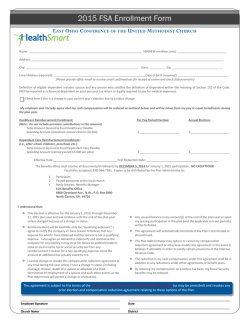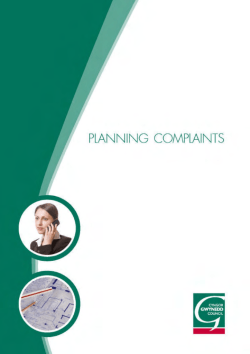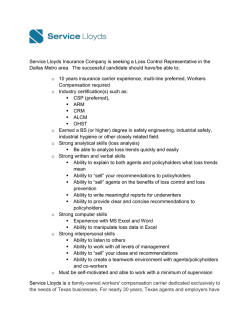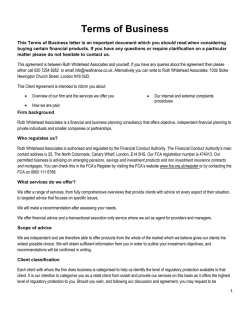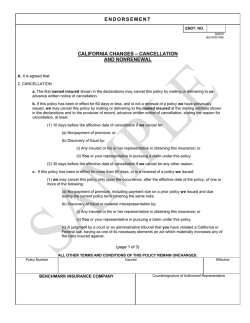
Three insurance claims scenarios every agent should share with their insured
Insurance companies come across all kinds of claim scenarios. In this article, we will discuss three different scenarios and the coverages that apply (or may not apply) to them: •Slip and fall incident •FDIC (Federal Deposit Insurance Commission) investigation •EEOC (Equal Employment Opportunity Commission) charge •These serve as great insurance claim examples to share with your clients of situations they may come across, and could help identify an exposure or a gap in coverage they might have. Slip and Fall Incident The claimant, a 34-year-old female, was entering a building where she was employed when she slipped and fell on icy stairs. This individual sustained a concussion and a torn medial meniscus of the right knee. The building owner was not responsible for the claimant’s injury, but rather a third-party vendor hired by the landlord. In this case, the workers’ compensation policy could respond as she was an employee in the course and scope of her employment. The workers’ compensation laws of most jurisdictions generally have an “egress and ingress” rule, which protects employees on the way into or out of their place of employment. This claimant can collect workers’ compensation benefits, as workers’ compensation is typically primary in all jurisdictions (first party benefits). The law also generally includes an “exclusive remedy doctrine” which holds the employee’s employer harmless from any civil liability. However, when the injury results from the fault of another party, the claimant can have the right to sue that third party. The responsible party in this scenario would likely be the maintenance company. If the claimant is successful in obtaining a judgment or settlement against the maintenance company, the workers’ compensation company could then have a statutory lien against that settlement to offset any amounts paid pursuant to the workers’ compensation policy. In other words, a portion of the amount paid under the workers’ compensation claim may be deducted from the judgment or liability settlement. This can be put into place to prevent the claimant from “double-dipping.” FDIC Investigation In this second scenario, a bank notified its insurance company of an order of investigation that they received from the FDIC. The order stated that the FDIC was beginning an investigation and attached subpoenas for nine bank officers and directors. The bank checked to see if coverage for this situation applied under its Directors & Officers(D&O) policy for attorney fees they would be charged to assist with the subpoenas. The bank’s D&O policy provided coverage for claims first made during the policy period against the bank and insured persons for any wrongful act. Critical to the determination of coverage was whether the FDIC order was considered a claim, commonly defined as a formal administrative or regulatory proceeding commenced by a filing of a formal investigative order or similar document against an insured for a wrongful act. Courts are split over whether issuance of a formal investigative order is considered a claim, or if a formal proceeding is a requirement that must be proven separately. Even if the court (in the jurisdiction of where this claim took place) believes the FDIC order of investigation is a claim under the policy, it’s unlikely the court consider this a claim against an insured for a wrongful act, as the order does not specifically name anyone as the subject of the investigation. Instead, it says that directors and officers “may” have violated laws or regulations, and the FDIC is investigating these potential violations. In other words, the officers and directors could be witnesses who would be asked to testify as a part of the investigation rather than be an actual party to the investigation. Additionally, the order does not specifically say that the bank or its directors/offices committed any offenses, so it may not specifically allege a wrongful act. So, even though parts of the “claim” definition from the policy applies, the complete definition does not. There may be other ways to obtain coverage for this type of situation. For example, it is possible that a policy containing subpoena coverage would cover an order of investigation similar to the example described above. In this situation, however, the insured had not purchased this separate policy, and was not covered. This is a great example to share with your bank clients to help them evaluate their current policy and any gaps in coverage they may have. EEOC Charge In this third and final scenario, the insured notified its insurance company of a lawsuit filed by one of its employees for racial discrimination and wrongful termination. The lawsuit indicated that in 2016, the employee had filed a complaint with the Equal Employment Opportunity Commission (“EEOC”). Both the EEOC complaint and the lawsuit alleged the same underlying facts. However, the two matters were filed during different policy periods. The EEOC complaint was never reported to the 2015-16 Employment Practices Liability Insurance (EPLI) policy that was in force at the time it was filed, and because the insurance company issued claims-made and reported policies to this insured, a significant coverage issue arose (i.e., whether the subsequent lawsuit was related to the initial EEOC complaint and therefore not covered due to late reporting). In the end, the EEOC complaint and the lawsuit were determined to be related and considered one claim, first made for purposes of coverage under the claims made policy when the EEOC complaint was filed in 2016. Coverage was denied for the lawsuit because the claim was not reported to the insurance company within the required time period required by the 2015-16 policy. It is important for insureds to be aware of the type of matters covered by their professional liability policies, as lawsuits are typically not the only matters identified as “claims” in a claims-made and reported policy. In the scenario described above, the EEOC complaint was explicitly included in the definition of a claim. Because the EEOC complaint was considered a claim, it should have been reported in order to ensure coverage for the subsequent lawsuit. Check out our blog post, “Employing the Right Coverage: 5 Industries that Need EPLI” for additional info and insight into what industries should consider getting an EPLI policy in place. We Have the Right Coverages for Your Clients We are continuously evaluating the market and our agents’ requests to deliver new products from workers’ compensation to commercial insurance. AmTrust has the coverage designed to help your clients protect their small businesses. For more details about AMT Warranty feel free to visit: http://blog.amtrustgroup.com/policywire/insurance-claim-scenarioexamples
© Copyright 2026

